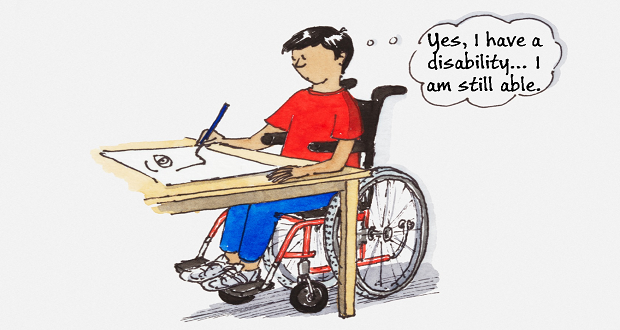My cat wakes me up at 6am every morning begging for food. She takes over every comfy cushion in my house and sleeps in whatever bed she fancies. She tracks litter all over the house and sheds on most surfaces she sits on — I am constantly cleaning up after her. Sometimes, she also has accidents that are annoying to deal with. My wallet is emptier because of the costs of her annual vet visits, food, treats, toys, and scratchers. Since she has no fingers, when she’s scared or in a rush, it’s easy for her to leave scratches on my skin or to poke holes in my sweaters. Living with my cat has taught me the many challenges of sharing a space with someone very different from me — an “other” who has special needs and can at times cause me inconvenience. Despite all my complaints about my cat, I am convinced that her presence enriches our lives beyond measure, and our family would not be the same without her.
If you have a cat, a dog, a child, or an adopted family member, you know that adding diversity to your family can be difficult — but also very rewarding. Choosing to coexist with difference can add dimensionality to our families and increase our compassion, love, empathy, and hospitality toward those who are unlike us. This choice can make our families more creative, fun, accessible, and inviting to the rest of the world; and connect us to more outside of ourselves.
Though not quite a family, corporate teams can benefit just as much from being hospitable and inclusive of diverse lived experiences. At the very least, when companies prioritize the inclusion of all people, no matter how different, they will cultivate a much more vibrant, accessible, and welcoming place to work.
When it comes to “difference” in the workplace, who is most at risk of being excluded?
Since most companies are built for bottom lines, such as profit and productivity, those who do not serve this purpose — those who cannot perform, or those who are perceived as not adding enough value to the team — are most at risk. These are likely employees with disabilities (e.g., visible or invisible, such as mental health issues), people who are pregnant, people with children, and employees from marginalized cultures and backgrounds — especially those with language barriers. These employees may require more resources to keep around and may be assumed to perform less “competitively” than other employees. Thus, companies have historically discriminated against these segments of the workforce.
Since most companies are built for bottom lines, those who do not serve this purpose — those who cannot perform, or those who are perceived as not adding enough value to the team — are most at risk. Share on XThese days, many companies competing for top talent are offering superior benefits for employees such as mental health PTO days, top-up maternity and paternity leave, and wellness packages for employee holistic health. Workplace health promotion programs are established with the economic rationale of aiming to save the company more money and preventing net lost productivity overall. While these new programs are well-intentioned, the reality is that 43% of working women still quit their jobs when they have children, and of those who do return, only 40% choose to come back full time. The pandemic further eroded the number of women in the labor force. According to the U.S. Bureau of Labor Statistics, there were 2.2 million fewer women in the labor force in 2020 compared to 2019. These numbers point to the fact that even despite cushy corporate benefits, somehow women are still struggling to feel adequately included at work. This loss erodes the diversity of our workplaces and perpetuates work cultures that lead to burnout.
For those who struggle with the invisible disability of depression or anxiety, inevitably exacerbated by the pandemic, the workplace has gotten even more intolerant of their decreasing performance. According to a recent study by Mental Health America, only 5% of employees felt that their employers provided a safe environment for employees who live with a mental illness. 9 in 10 employees reported that their workplace stress affects their mental health, and 4 in 5 feel emotionally drained from work, an early sign of burnout. If you think about your workplace, I’m sure you can think of 1 or 2 people who seem depressed, some who are irritable or anxious, and others who are really struggling with deadlines and deliverables. How many people do you know who actually take mental health days and utilize EAP services? It is clear that companies have a long way to go to make workplaces more inclusive to those struggling with mental health issues.
As long as we only value performance as a benchmark for evaluating work success, we will create a system with winners who work more and work harder, and losers who are not able to meet these standards. We will feed a competitive environment with aggressive corporate politics, burnout and turnover. We will miss out on the many other ways that different employees can meaningfully contribute to our teams, our projects, and our work culture. For example, we may overlook the insights a new mother can bring to her project, or the empathy someone with depression can bring to a team as a result of experiences. Productivity is not the only way employees can add value because everyone brings something different to the team.
As long as we only value performance as success, we will feed a competitive environment with aggressive corporate politics, burnout and turnover. We miss out on the other ways that employees can contribute to teams. Share on X Productivity is not the only way employees can add value. Share on XTo truly be inclusive and hospitable, employers need to recognize the unique capabilities and offerings of each employee and assess their contributions accordingly, beyond merely deliverables and performance. Companies will need to become more human when it comes to adapting to employees’ needs.
To revisit my analogy: My cat can’t use the bathroom like I do. Instead of punishing her, we got her a litterbox to accommodate her needs in the house. She would also fail if I only assessed her by her ability to make me lunch… but she is a superb friend on a rainy day. Likewise, that new mother may be struggling to meet her deadlines because her baby is keeping her up at night. Don’t forget the other reasons you hired her, and also how her new role as a mom adds to your team. What can your company do to make new parents feel seen, understood and accommodated in their new life challenges? What’s going to make it easier for that mom to stay at work? How might “work” need to shift to make it possible for someone struggling with serious anxiety to continue on? An easy way to find out is simply to ask!
That new mother may be struggling to meet her deadlines because her baby is keeping her up at night. Don’t forget the other reasons you hired her, and also how her new role as a mom adds to your team. Share on XOf course, it’s a lot easier to bring in more of the same to a company instead of accommodating different types of employees. However, employers should remember what’s at stake when diversity is eroded in organizations. When you only hire and retain able-bodied, hard driving, monocultural employees, don’t be surprised if you end up fueling a competitive workaholic culture leading to discrimination, burnout, and turnover. No one wants to work in that kind of environment for long. Every employee wants to work for companies who value their personhood and what they can uniquely bring to a team. When companies get this right, the organization will be like one happy family — each person contributing their part, synergistically adding value to the longevity and wellbeing of the whole unit.
When you only hire able-bodied, hard driving, monocultural employees, don’t be surprised if you end up fueling a competitive workaholic culture leading to discrimination, burnout, and turnover. Share on X
Sources:
https://www.flexjobs.com/blog/post/the-state-of-mothers-and-the-workforce/
https://www.rand.org/blog/2020/11/women-are-leaving-the-labor-force-in-recordnumbers
https://www.uncrushed.org/content/2021/5/10/mind-the-workplace-2021-report




















